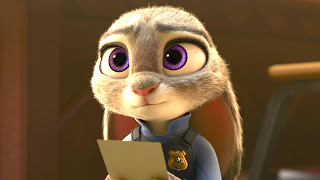As I have watched the drunken clown rodeo that has been the presidential campaign season so far, I’ve been particularly interested in the role the media – both social and mass – have played in shaping the story of who is going to be the next president. Reporters getting thrown out of press conferences, professional Internet trolls on the campaign payroll, front page stories about candidates saying things like “"I could stand in the middle of 5th Avenue and shoot somebody and I wouldn't lose voters" – it’s all been like a fever dream you have after drinking Nyquil and falling asleep to CNN.
Most of us know, Andy Griffith as the folksy and
superhumanly decent Sherriff Andy Taylor of Mayberry or perhaps as Matlock the
folksy and superhumanly decent lawyer. But here Griffith plays Larry “Lonesome”
Rhodes, a moody, immoral, but immensely charismatic drifter. Rhodes is
discovered while sleeping it off in a jail cell by Marcia Jeffries, an
ambitious, college educated woman who produces a radio show for her uncle’s
station in Arkansas. A Face in the Crowd is a kind of man-on-the-street show
focusing on local color. Marcia asks Rhodes to say a few things when she’s on
the scene in the local jail and immediately his aw-shucks demeanor combined
with his cunning intelligence make him immensely popular.
Lonesome Rhodes soon becomes a household name. He
transitions from radio to the fledgling world of television and becomes an
opinion maker of the first order. Rhodes is willing to endorse whichever
products or candidates pay the most money and he revels in the sway he holds
over the American people. Barreling and blustery, a creature of almost
completely unbridled appetites and opinions, Rhodes seems to have walked
straight out of a Tennessee Williams play. Griffith plays him with a sweaty,
evangelical fervor that is both off-putting and hypnotic. Marcia is played by
Patricia Neal who exudes canny intelligence and the naïve ambition that helps
Rhodes achieve his success. She’s repelled but also helplessly drawn to him.
Neal’s naturalistic performance is one of the least showy and most convincing
film portrayals I’ve ever seen.
Rhodes’ arrogance, contempt for his audience, and lust for
power eventually prove to be his undoing. Afraid of his lack of conscience and
his growing power, Marcia turns his microphone up during the closing credits of
his show while Rhodes refers to his viewers as idiots, morons, and trained
seals who flap their flippers at his command. In the time it takes his elevator to go from
the top floor of the studio building to the bottom, Rhodes’ career is over.
The film ends with Lonesome Rhodes truly alone in his
penthouse apartment, bellowing out Marcia’s name as she leaves him behind
forever. And while it’s a happy ending in that Rhodes doesn’t become as
powerful as he could have (he had his eye on a cabinet position in the White
House), the film doesn’t let viewers of the hook that easily. Rhodes is more
the symptom than the disease which seems to be our collective gullibility and
willingness to listen and obey without thinking too much.
As the campaign clown car continues to careen toward
November, do two things: first, really investigate each candidate’s claims and
plans, see what he or she really wants to do and how they plan to do it.
Second, watch A Face in the Crowd and see if it doesn’t make you want to be a
little bit more careful about who you listen to.







